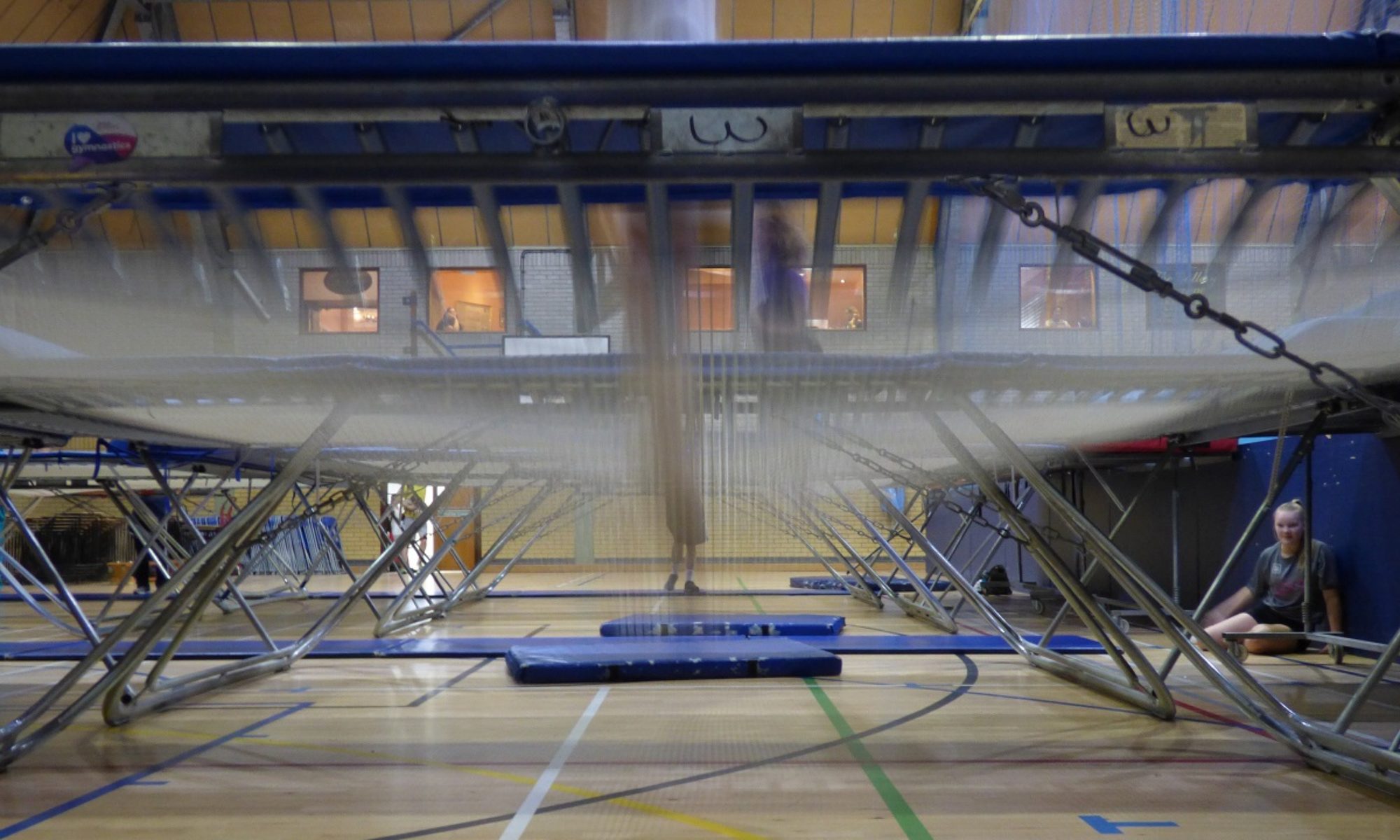Back somersaults
The following article was written by Cathy Page from Birkenhead Trampoline Club.
Which somersault do you teach first?
Most people seem to teach tucked back somersault first. I don’t. I teach a straightish back somersault first, i.e. a somersault that takes off straight and doesn’t tuck but may pike on the way down in the early learning stages.
Why?
- Straightish back somersault requires more angular momentum than tucked. Tucked is the least powerful. If too little off centre force is applied the pupil will be seriously short of rotation. Whereas if they have learnt it straightish and then are a bit short of rotation, they can pike down earlier than usual and still land on feet.
- The most important aspect of back somersault is the take off, with hips forwards and shoulders slightly backward so that the whole body is balanced over the feet. To emphasize this I ask the pupil to push his belly button to the roof on take off. If they then have to tuck, this makes the pupil have to stop the hip extension and tuck. Very often the beginner will tuck too soon and lose their hip extension. I have had many from other clubs who come to my club with awful back somersaults which pick the knees up fast, and lean back to get rotation often landing on the mat behind.
- Tucking requires also untucking and it will be faster than straightish back somersault. But worse it is two extra thoughts. It is enough to concentrate on the hip extension and then the focussing on the bed on coming down to land.
- The relative slowness of the straightish back somersault gives ample time to see the bed before landing, compared with a tuck back.
- Its easier to add on tucked or piked shapes from straightish than to teach straight back from a tucked back somersault. I used to teach them tucked but changed when I realised all of the above.
© Cathy Page

